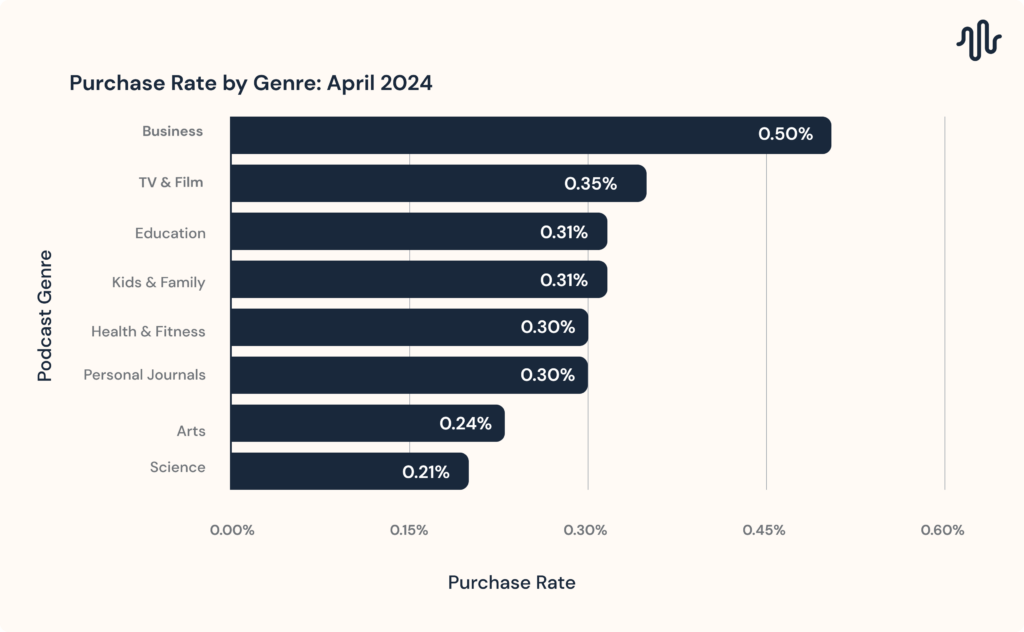This Week in the Business of Podcasting
London’s calling! Someone else will have to pick up, as I’m busy packing, but Sounds Profitable will be at The Podcast Show London on May 22nd and 23rd. Before I finish packing my suitcase, let’s look at this week’s news.

Transparency. Performance. Automation.
Spotify to remove price floors from Spotify Audience Network
This week a new email from Spotify announced that, as of July 1st, publishers on Megaphone will no longer have the ability to set price floors for the Spotify Audience Network (SPAN).
To put this into perspective: the current ad ecosystem on Megaphone operates as a waterfall. Whenever a request for an ad is sent from a podcast, it hits each layer of the waterfall and continues down to the next if the ad is not filled. The layers on Megaphone go direct-sold inventory, SPAN, then finally VAST tag/programmatic inventory. Today, some publishers on Megaphone are given access to set VAST higher than SPAN, but it’s not the norm. In this method, each layer can only compete with itself, not each other.
By removing the price floor in a programmatic space, one can drive competition for inventory that will increase the win price for ads over time. However, SPAN is not programmatic, and it’s not clear if the change will introduce bid ranges for Spotify campaigns that take advantage of this new lack of price floor. It’s possible SPAN will begin consuming more inventory before allowing calls out to programmatic solutions.
A quote from Sounds Profitable founder Bryan Barletta: “This is an action that will have a sizable impact for publishers on Megaphone who have put considerable effort into their own programmatic relationships. SPAN sitting on top of programmatic, and not competing with it, prevents a publisher from maximizing their own ad inventory and relinquishing control to Spotify fully.” Publishers have also been given the ability to set inventory to direct sales-only for ads uploaded to Megaphone.
Political Ads in Podcasting
This Wednesday from Tom Webster: with a hotly-contested presidential election approaching in the U.S., the topic of political ads and their place in podcasting is once more making the rounds. While radio will certainly be taking part in political campaign ad money over the coming months, podcasting is a different medium with potentially different audience sensibilities.
Webster breaks out several slides from the Sounds Profitable study Safe and Sound, in which respondents answered questions regarding brand safety and suitability in podcasting, including questions specifically about political content. Podcast listeners are more likely to vote than observed rates in the general population. In 2020, two-thirds of eligible voters cast a ballot, the highest percentage since 1900. Narrowed down to podcast listeners, the number climbs to 81%.
Respondents to Safe and Sound were asked how likely they would be to stop listening to a podcast if they heard a political ad from a candidate who does not share their views. 33% say somewhat likely, while 23% say very likely. Totaling out an over 50% chance a podcast listener will simply leave. Not great odds.
However: when asked the opposite (how likely would one be to stop listening if a political ad from a candidate they did share views with appeared) the likelihood of someone leaving still totaled to 38%.
“Yes, these data don’t appear to be as polarized as the previous slide, but even still – I don’t know that I would relish potentially blowing off nearly 40% of my audience to run an ad for any candidate, revenue or not.”
Podcasting has an opportunity to circumvent identity politics and instead present itself as the platform where discussion and advertisements can spread issues, not candidates. Webster says in his decades of doing political research that more often than not local issues have a higher likelihood of people agreeing with each other than not.
“In San Antonio, people are concerned about water rights. In Kansas City, infrastructure and too-rapid growth. In Maine? Preserving the lobster industry. And so on. These are the kinds of issues that voters on both sides of the aisle often find themselves in agreement about at the local level, as long as party ID is stripped from the communications. And with a podcast, an issue ad could be more than just a soundbite. It could even be a featurette, or some other form of integrated content. Educating listeners about state and local issues is something a podcast can pull off in a way that local radio cannot outside of Sunday early morning public service programming.“
Streaming’s Upfronts Mirror Podcasting
Last Friday from Ryan Barwick at Marketing Brew: It’s upfront season, and this year advertisers are projected to spend around $18.8 billion, or one-third of total TV ad spend and 17% of the year’s digital video spend.
As the TV upfronts leave the starting line, strong parallels between the streaming side of the industry and podcasting are beginning to show. With an abundance of inventory, prices have to come down for buyers to want to compete. This year’s upfronts are focused more on new tech capabilities instead of upcoming content, similar to the Podcast Upfront. And Nielsen’s value as a standard has been debated for years, and streaming still uses Nielsen numbers heavily even though it’s not a perfect solution. Quite like podcasting’s relationship with the download.
Advertisers have under-invested in Hispanic Audiences for 25 Years
This Monday from Michael Roca at AdWeek: the summer of 1999 was a high water mark for Latin music in the U.S. cultural moment. Ricky Martin, Jennifer Lopez, Marc Anthony, many artists experienced a flood of support during the “Latin Boom,” leading to the creation of the Latin Grammy Awards the following year, as well as doubling marketer investment in reaching Hispanic audiences.
Total advertising spend on reaching said audiences went from 1.5% to 3% in 2000. In the 24 years since that same investment has only increased by 4%. Since the late 90s Hispanic numbers on the U.S. census have doubled, accounting for nearly 20% of the U.S. population with $3.2 trillion in annual buying power.
Roca interrogates several issues that need addressing to fully embrace authentic advertising to the U.S. Hispanic audience: capturing in-language consumption (e.g. research tools need to collect data in Spanish), properly validating data sets, and building in first-party brand data.
Podcasting has an opportunity to be a frontrunner, being an industry known for its ability to target niche audiences with authentic, relatable content. That combined with podcast advertising’s inherent wealth of first-party data, it could move the needle on Hispanic audience targeting.
Podscribe Index
Purchase Rate by Genre, April 2024

In our latest Podscribe Index, we’ve seen intriguing shifts in conversion rates from March to April. The Business genre remains robust with a rise from 0.42% to 0.50%. Notably, the Kids & Family genre saw a significant jump from 0.08% to 0.31%, and Education also increased from 0.19% to 0.31%. However, some genres like Health & Fitness and Personal Journals experienced slight decreases in their conversion rates.
Quick Hits
While they may not be top story material, the articles below from this week are definitely worth your time:
-
Horizon Next Partners with ArtsAI on Proprietary Cross-Platform Audio Measurement Framework. The partnership will allow for enhanced audio analytics and increased transparency in a channel historically difficult to measure and optimize.
-
Audio in the AI age by Brian Morrissey. With generative AI tools flooding text and visual mediums with ‘sludge’ content, Morrissey argues podcasting’s authenticity will make it a safe haven for audiences seeking human connection.
-
Julie McNamara Exits as Head of Spotify Podcast Studios by Todd Spangler. McNamara says she is leaving to go back to her creative roots.
-
Open letter warns government of ‘disastrous impact’ of ad-funded BBC podcasts by Ella Sagar. Multiple U.K. companies have signed the open letter in a coalition, calling for the BBC to work with regulatory boards to reconsider running ads on audio served through third party sources.









































































































































































































